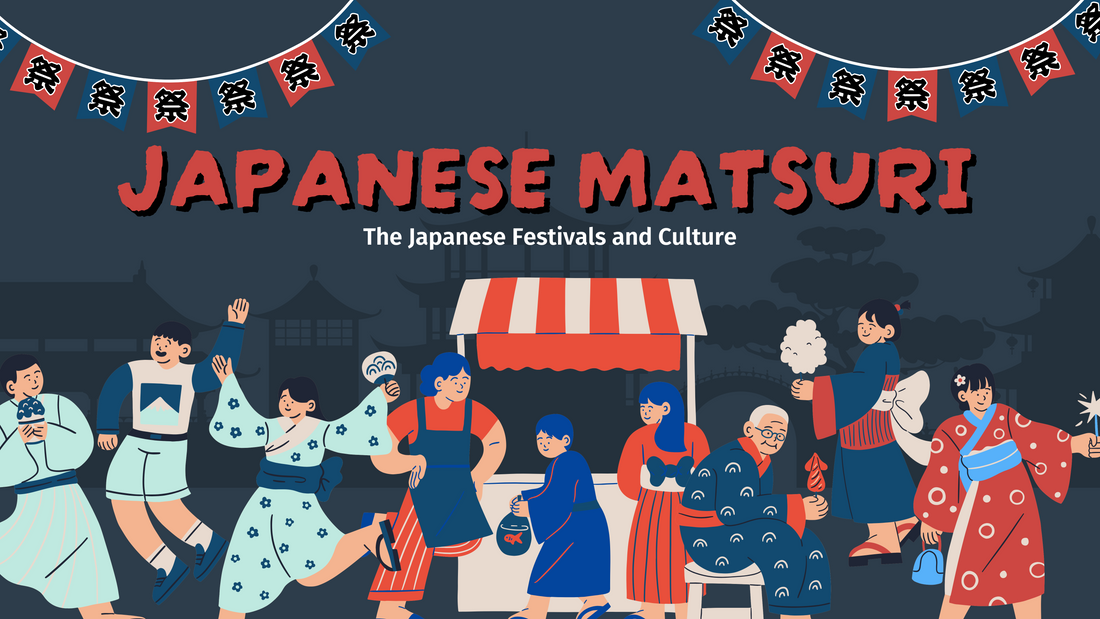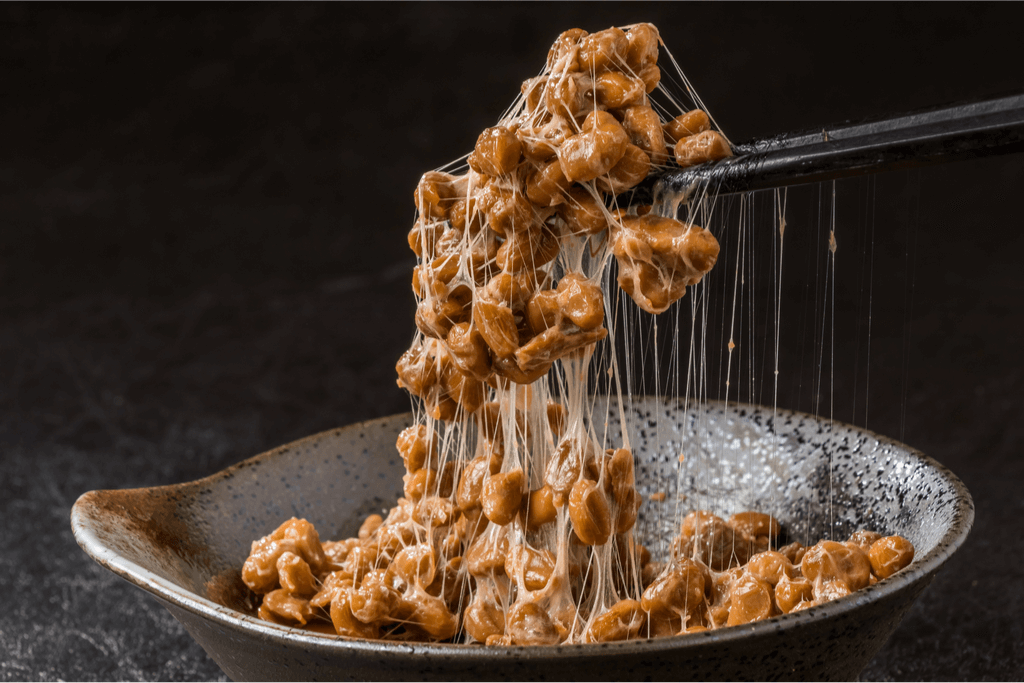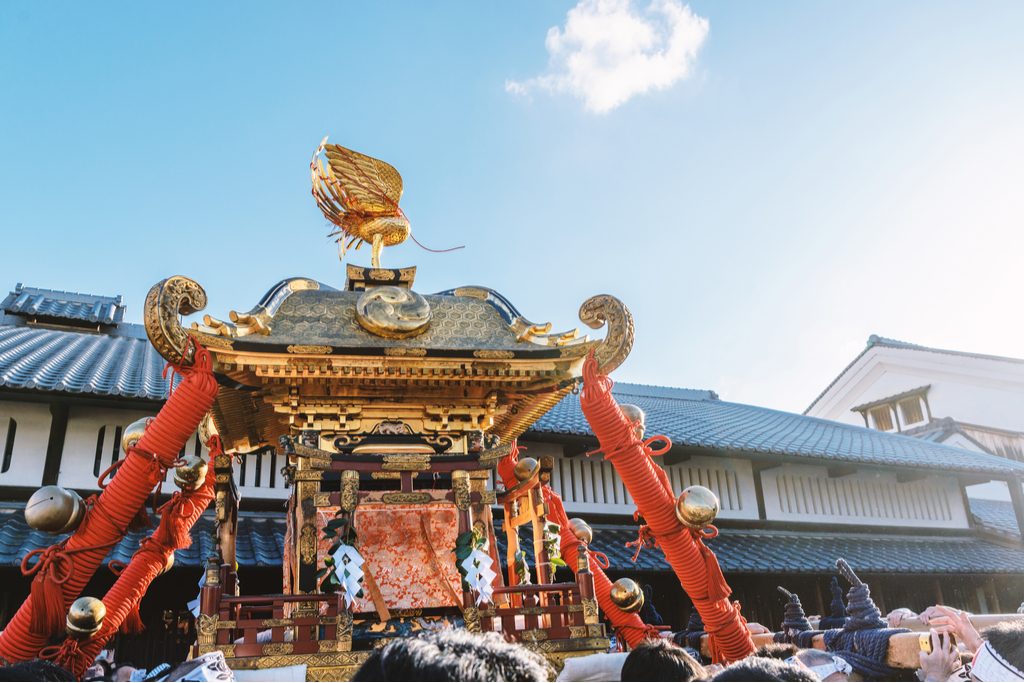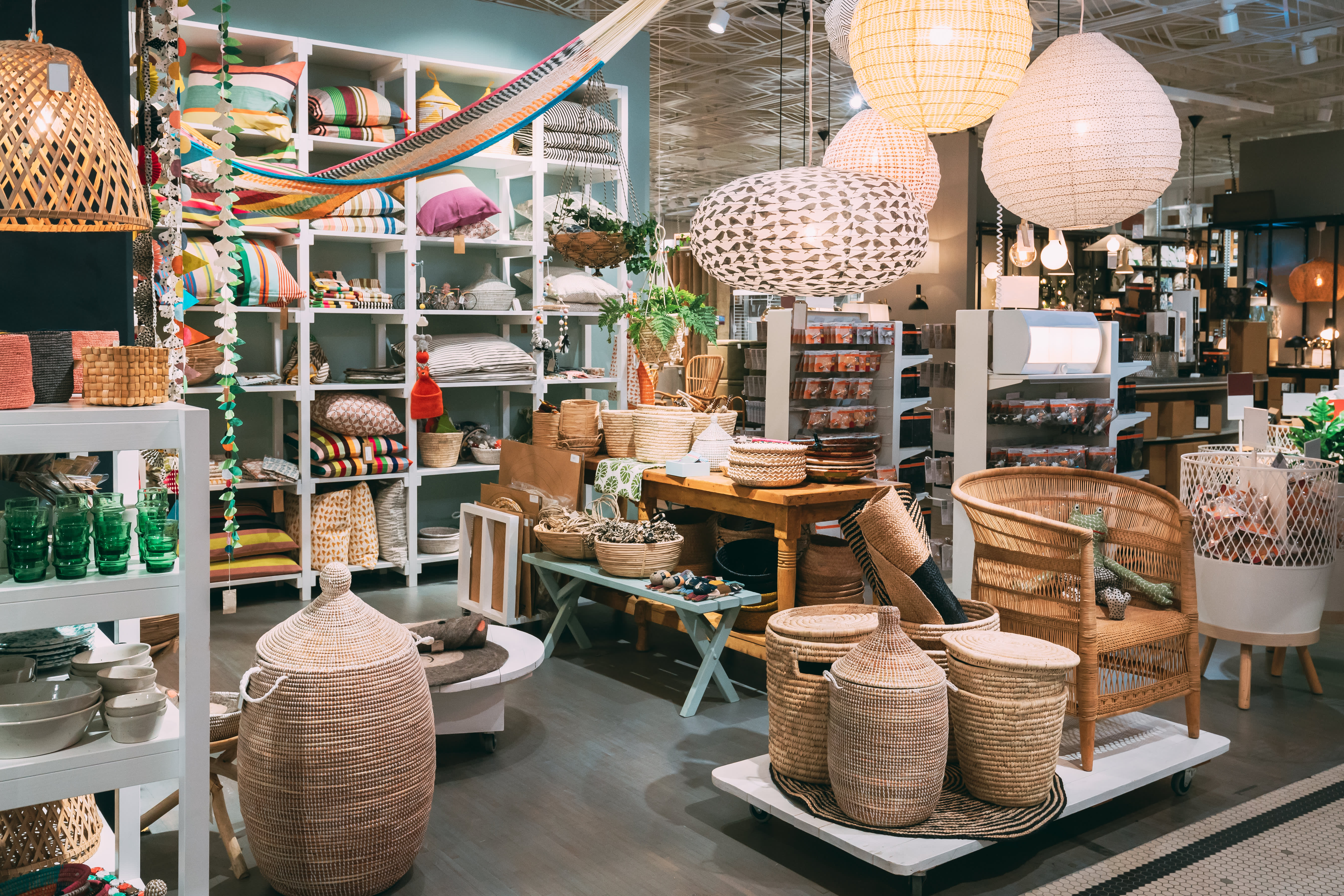
Festival Of Japan Part 2
Share
Setsubun Festival (Bean-Throwing Festival): This is an important festival in Japanese culture, held annually on February 3rd, marking the transition between winter and spring. The festival signifies driving away evil spirits and bad luck from the previous year and welcoming good fortune and blessings for the new year.

Key activities during the Setsubun festival:
- Bean Throwing (Mamemaki): This is the most prominent and popular activity. Roasted soybeans are thrown out of the house or at a person dressed as an "oni" (demon/ogre) while shouting "Oni wa soto! Fuku wa uchi!" (Demons out! Fortune in!).

- Eating Beans: Traditionally, people eat the number of beans equal to their age plus one more for health and good luck in the coming year.

- Hanging Sardine Heads and Holly Leaves: People hang dried sardine heads and holly leaves at entrances to ward off evil spirits.

- Lion Dances: Some places also feature lion dances to wish for good luck and prosperity.
- Temple and Shrine Festivals: Temples and shrines often hold large Setsubun festivals with prayer ceremonies and large-scale bean throwing, attracting large crowds.
Meaning of the Setsubun Festival:
The Setsubun Festival is not just a fun activity but also carries deep spiritual meaning. It reflects people's desire for a peaceful, happy life, driving away bad things and looking forward to good things in the new year.
Kanamara Matsuri:

The Kanamara Matsuri, also known as the "Festival of the Steel Phallus," is a unique and famous Shinto festival held annually on the first Sunday of April at the Kanayama Shrine in Kawasaki, Japan.
Origin and Meaning:
The festival originated in the Edo period and is associated with the Kanayama Shrine, where sex workers once prayed for protection from diseases, especially sexually transmitted infections. Today, the festival has a broader meaning, celebrating fertility, sexual health, and praying for happy marriages and childbirth.
Symbols and Activities:
The phallus is the central symbol of the festival, represented in various forms:
- Mikoshi: The highlight is the parade of mikoshi (portable shrines) featuring three giant phalluses made of wood or metal, symbolizing fertility and prosperity.

- Decorations and Goods: The phallus is depicted on many decorations and souvenir items such as amulets, candy, masks, candles, and even vegetables carved into phallic shapes.

- Performances and Music: The festival includes music performances, traditional dances, and other entertainment related to themes of sex and fertility.
Participation and Diversity:
The Kanamara Matsuri attracts large numbers of local residents and international tourists. In recent years, the festival has also drawn interest from the LGBT community and supporters of sexual rights, turning it into an event celebrating diversity and acceptance in sexuality and relationships.
Cultural and Social Significance:
Despite its seemingly controversial appearance, the Kanamara Matsuri holds deep cultural and social significance. It reflects the openness and frankness of the Japanese in discussing sexuality, while also helping to raise awareness about sexual health, prevention of sexually transmitted diseases, and promoting respect for different relationships and sexual identities.
Yuki Matsuri (Sapporo Snow Festival):

The Yuki Matsuri, also known as the Sapporo Snow Festival, is one of the most spectacular and famous winter events in Japan. Held annually in February in the city of Sapporo, Hokkaido, the festival transforms the city into a winter wonderland with countless magnificent snow and ice sculptures.
Highlights:
- Snow and Ice Sculptures: The main attraction is the hundreds of enormous snow and ice sculptures created by talented artists from around the world. These works vary in size, from replicas of famous world landmarks to cartoon characters and abstract themes. At night, the sculptures are brilliantly illuminated, creating a sparkling and magical scene.
- Other Activities: Besides the sculptures, the festival offers many other exciting activities such as snow slides, ice skating, snowball fights, enjoying local cuisine, and attending music and art performances.
- Venues: The festival is held at three main sites: Odori Park, Susukino, and Tsudome. Each site has its own characteristics and offers different experiences to visitors.
Significance: The Yuki Matsuri is not only an important cultural and entertainment event for Japan but also an occasion for people and tourists from all over the world to meet, socialize, and enjoy the wonderful winter atmosphere in Sapporo.
Hadaka Matsuri (Naked Festival): Held annually in February in Okayama, this festival involves thousands of men wearing only a fundoshi (loincloth). They compete to catch lucky wooden batons (shingi) thrown by a priest.
Besides the festivals mentioned above, Japan has many other traditional festivals held in different localities. Each festival has its own unique features, reflecting the diversity and richness of Japanese culture.
Major and Popular Nationwide Festivals:
-
Shogatsu (正月) - New Year (January) This is the largest and most important festival of the year for the Japanese, typically lasting from January 1st to 3rd, although the festive mood often extends through the first week of January. Key activities during Shogatsu:
- Decorating Homes: People decorate their homes with auspicious items like Kadomatsu (pine decorations at the entrance), Shimekazari (straw rope decorations at the entrance), and Kagamimochi (stacked rice cakes).
- Visiting Shrines and Temples (Hatsumode): People visit shrines and temples to pray for a peaceful, lucky, and successful new year. They also draw Omikuji fortune slips to see their fortune for the year.
- Eating Traditional Food (Osechi Ryori): Osechi Ryori are special dishes prepared for the New Year, often served in tiered lacquer boxes. Each dish carries a symbolic meaning for luck, health, and longevity.
- Playing Traditional Games: Traditional games like Hanetsuki (battledore), Takoage (kite flying), and Karuta (card game) are often played during New Year.
- Giving Money Gifts (Otoshidama): Adults usually give money gifts (Otoshidama) to children during the New Year.
- Sending New Year's Cards (Nengajo): The Japanese have a custom of sending New Year's cards (Nengajo) to relatives and friends.
- Listening to Joya no Kane Bells: On New Year's Eve, temples ring their bells 108 times (Joya no Kane) to drive away the evils of the old year and welcome the good things of the new year. Meaning of Shogatsu: Shogatsu is an occasion for Japanese people to gather with family, remember ancestors, and pray for a peaceful and happy new year. It is also a time for everyone to rest, relax, and enjoy the festive atmosphere.
-
Setsubun (節分) - Bean Festival (February 3rd or 4th): Marks the transition between winter and spring. Japanese people throw roasted soybeans (Mamemaki) to drive out demons and invite good fortune into their homes. Children often enjoy throwing beans at someone dressed as an oni (demon).
-
Hinamatsuri (雛祭り) - Doll Festival (March 3rd): Dedicated to girls, praying for their health and happiness. Families display traditional Hina dolls (Hina Ningyo) and enjoy special foods like square-shaped sushi (Chirashizushi) and clam soup (Ushiojiru).
-
Hanami (花見) - Cherry Blossom Viewing Festival (Late March - Early April): When cherry blossoms (Sakura) bloom, Japanese people gather under the trees to view the flowers, have picnics, and enjoy the spring atmosphere. This is a much-loved custom.
-
Kodomo no Hi (子供の日) - Children's Day (May 5th): Children's Day, also known as Kodomo no Hi, was originally celebrated as Boys' Day (Tango no Sekku) on May 5th each year. However, over time, it evolved into a national holiday to honor all children, both boys and girls, in 1948. Meaning and Symbols: This day carries many deep meanings and symbols, reflecting the wishes of parents and society for the health, happiness, and success of children. Some prominent symbols include:
- Carp Streamers (Koinobori): These colorful flags, often depicting carp swimming upstream, are flown outside homes to symbolize strength, perseverance, and the ability of boys to overcome adversity. Carp are chosen for their ability to swim strongly upstream, symbolizing determination and success.
- Samurai Dolls (Musha Ningyo): These dolls, often dressed in samurai armor and helmets, are displayed indoors to inspire boys with courage, honor, and strength. They represent the ideals of samurai warriors, respected for their loyalty, bravery, and combat skills.
- Kashiwa Mochi (Oak Leaf Rice Cake): This type of rice cake, wrapped in an oak leaf, is often eaten on Kodomo no Hi. Oak leaves symbolize prosperity and longevity, as old leaves don't fall until new ones grow, representing the continuation of generations.
- Chimaki (Steamed Rice Dumpling): This treat, made from glutinous rice wrapped in bamboo leaves, is also popular on Kodomo no Hi in some regions of Japan. It symbolizes good health and happiness.
- Kabuto Helmets: Some families display Kabuto, traditional samurai helmets, as a symbol of protection and strength for boys. Celebratory Activities: On Kodomo no Hi, families often spend time together, participate in festive activities, and enjoy traditional foods. Some popular activities include:
- Festivals and Parades: Many communities organize festivals and parades with music, dance performances, and other activities for children.
- Traditional Games: Children often play traditional games like kite flying, Kendama (a type of cup-and-ball game), and Koma (spinning tops).
- Iris Baths (Shobu-yu): Some families have a tradition of bathing in hot water with iris leaves, believed to have properties to ward off evil spirits and bring good health.
- Enjoying Special Foods: Families usually prepare and enjoy traditional foods like Kashiwa Mochi, Chimaki, and other dishes. Kodomo no Hi is an important holiday in Japan, not only honoring children but also serving as an occasion for families to gather, express love, and wish the best for their children.
-
Tanabata (七夕) - Star Festival (July 7th): Based on the romantic story of the deities Orihime (Vega star) and Hikoboshi (Altair star). People write wishes on small paper strips (Tanzaku) and hang them on bamboo trees to pray.
-
Obon (お盆) - Ancestor Festival (Mid-August, varies by region): This is an occasion to remember ancestors and the deceased. Families typically clean graves, make offerings, and hold traditional cultural activities. The Awa Odori dance is an important part of Obon in some regions.
-
Shichi-Go-San (七五三) - Seven-Five-Three Festival (November 15th): For boys aged 3 and 5, and girls aged 3 and 7. Parents take their children to shrines to pray for their health and proper growth. The children often wear adorable traditional clothing.
Distinctive Regional Festivals:
-
Gion Matsuri (祇園祭) - Kyoto (July): One of Japan's three largest festivals, Gion Matsuri is also known as one of the most famous and important festivals in Kyoto, and even nationwide. This festival takes place throughout July, attracting millions of visitors from around the world to experience Japan's unique traditional atmosphere and culture. Highlights of Gion Matsuri:
- Yamaboko Junko (山鉾巡行): This is the main and most prominent event of the festival, occurring on July 17th and 24th. During this event, large floats called "yamaboko" (山鉾) are paraded through the streets of Kyoto. These floats are lavishly decorated with artworks, symbols, and traditional ornaments. Each float represents a different area or neighborhood association within the city.
- Yoiyama (宵山): On the evenings before the Yamaboko Junko (from July 14th-16th and 21st-23rd), the streets around the parade route come alive with food stalls, handicrafts, and traditional entertainment. It's a great time to enjoy Japanese street food and immerse oneself in the festive mood.
- Mikoshi Arai (神輿洗い): On July 10th [See note above], the mikoshi (神輿) - smaller portable shrines carrying deities - are taken to the Kamo River to be purified in a traditional ceremony. This ritual is believed to bring luck and prosperity to the city.
- Other Events: Besides the main events, Gion Matsuri includes many other activities throughout July, such as traditional music and dance performances, competitions, and other cultural activities. Origin and Meaning: Gion Matsuri originated in the 9th century, initially held to ward off evil spirits and pray for the health and prosperity of the people. Today, the festival still holds significant importance in the spiritual life of Kyoto residents, while also serving as an occasion to honor Japan's long-standing culture and traditions.
-
Awa Odori (阿波踊り) - Tokushima (Mid-August): A large dance festival with thousands of participants dancing to traditional rhythms, attracting large numbers of tourists.
-
Sapporo Snow Festival (さっぽろ雪まつり) - Sapporo (February): A famous snow festival known for its huge and intricate snow and ice sculptures.
-
Nebuta Matsuri (ねぶた祭り) - Aomori (August): A festival featuring parades of giant illuminated lantern floats shaped like historical and mythical figures, very impressive and lively.
-
Kanda Matsuri (神田祭) - Tokyo (May, held in odd-numbered years): One of Tokyo's three largest festivals, famous for the parading of very heavy portable shrines (Mikoshi).
These are just a few representative examples. Japan has countless other traditional festivals, each carrying its own cultural and historical significance, reflecting the rich spiritual life of the Japanese people. If you plan to travel to Japan, be sure to research the festivals taking place during your visit for memorable cultural experiences.


